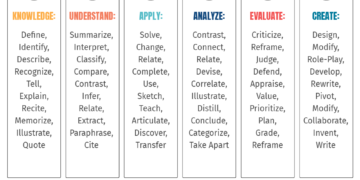What Are The Key Aspects To Assess The Impact Of Training Programs?
Training employees is becoming more important as economies continue with major shifts and adaptations to changing work environments. In the next few years, an organization’s ability to effectively train and upskill its employees will be essential to maintaining a competitive advantage. Those organizations that cannot, or will not, invest in employee training will become stepping-stones to success for those who commit to effective employee training programs.
One of the most important aspects to effective training is to assess the impact of employee and organizational performance. But training evaluation is often mistakenly approached in the wrong order:
- After a training solution is implemented.
- From the bottom up—impact on employee performance and then the organization.
- A decision on what to do with the results of the evaluation.
However, an effective evaluation of the impact of training and development programs is most effective if it’s approached in the opposite order.
The first step in assessing the impact of training solutions should begin during the Training Needs Analysis (TNA).
In the analysis phase, L&D teams can work with business leaders to determine how to use the findings or training assessments. The most effective use of this data is as the impetus to iterate training solutions, honing them into highly effective programs. Commitment to action before analysis, development, and implementation is key. Organizational leaders should ask themselves the following questions:
- What will be done with the data?
- Will data interpretation initiate the time and effort into changing training programs?
- Is the plan to just report results or implement plans based on those findings?
An action of this type, even asking and answering the questions, requires courage, accountability, and honesty from the leadership team.
It’s also vital to determine the value of evaluation for training solutions and the amount of effort that should go into it. For small programs where the intended and admitted impact might be small, it may not be worth the effort it takes to evaluate training. But programs that consume moderate to large resourcing should be evaluated for effectiveness.
How Do You Assess The Impact Of Training And Development On Organizational Performance?
Evaluating the impact of training and development on organizational performance answers two key questions:
- What is the impact the training program had on business performance?
- What is the ROI of training programs?
Any training solutions that don’t have a positive impact on either business performance or include a positive return on the investment (ROI) program should be re-evaluated.
The assessment of training and development’s impact on organizational performance begins during the Training Needs Analysis (TNA). It’s important for learning professionals to work with business partners to identify valid L&D and business metrics and how they’re aligned. For example, if a business leader asks a training team to develop training on negotiations, the team should determine how the leader knows that there is a need for negotiations training in the first place. They need to work together to identify what metrics show that the skill of negotiation is lacking in the organization and how the business’s bottom line can be improved with effective training.
During the TNA, the following questions are useful for L&D leaders to ask business stakeholders. This will enable them to assess the impact of training and development on organizational performance:
- What is the expected business impact?
- Are you trying to solve a business problem that requires new systems or processes? Will employees need to perform new tasks?
- Are you trying to solve a performance problem that requires existing employees to do something differently than how they do it now?
- What metrics will be used to measure current performance?
- Can we have access to that data before and after the training?
- How will you define success for this training project?
- How will you define success for the actual training?
In addition to positive ROI indicators, effective training will also impact:
- Employee morale and motivation (often evaluated in engagement surveys).
- The quality of communication and collaboration within the organization.
- The ability for talent to move up and sideways through an organization.
How Do You Assess The Impact Of Training Programs On Employee Performance?
The following three questions are useful when assessing the impact of training and development on employee performance:
- How effectively did the training help learners acquire the requisite knowledge?
- How effectively did the training help learners improve their skills?
- How effectively did the training help learners improve their performance on the job?
Like assessing the impact of training and development on organizational performance, the evaluation of the impact of training and development on employee performance starts in the TNA phase, i.e., mapping learner outcomes to performance outcomes and business outcomes. This is most effectively done when L&D teams work closely with business leaders.
During the TNA, the following questions are useful for L&D leaders to ask business stakeholders. This will enable them to evaluate the impact of training and development on employee performance:
- What is the performance gap?
- How do you know a problem currently exists?
- How will you know when it is resolved?
- What is the goal or expected outcome of this training (the specific and measurable objectives accomplished by this project)?
- How will the performance change be measured?
- Can we have access to that data before and after the training?
- How can we compare the current performance to a desired future-state performance?
What Are The Ways To Assess The Impact Of Training And Development On Employee Performance?
There are several ways to assess the impact of training and development on employee performance, including:
- Surveys: These are useful, especially when measuring the value participants saw in training programs.
- Discussions: While more labor-intensive than surveys, discussions help L&D teams identify qualitative results of training.
- Quizzes: They are useful when evaluating if participants acquired important knowledge in training programs.
- Case studies: While they require more effort, they provide highly contextualized and reliable training results.
Additionally, skills-based assessment identifies the effectiveness of behavior change and talent development efforts. To assess performance outcomes:
- Measure time to proficiency. Steep learning curves are useful when it’s important for employees to quickly acquire skills needed for the job.
- Measure employee performance. Such metrics, like quality scores or sales numbers, can be used to measure performance.
- Get feedback from managers. It can be particularly useful, especially when asking them to compare performance before training to performance after training.
Which Training Assessment Model Should Be Used?
There are many assessment models L&D teams use to measure the impact of training and development on employee performance, including the Learning-Transfer Evaluation Model (LTEM); Kaufman’s five levels of evaluation; the success case method; Context, Input, Process, and Product (CIPP) evaluation model, Kirkpatrick’s levels of evaluation; and one developed by a student of Kirkpatrick, the Phillips ROI model, which adds the ROI level to Kirkpatrick’s model. While this article doesn’t get into the details of each model and its merits, those who are new to training assessment should check out this article for more information.
Parting Thoughts
To maintain a competitive advantage, it’s becoming more and more important for organizations to develop effective employee training programs. Organizations will gain or maintain market advantages by upskilling and reskilling their employees. Key to those efforts is the ability to effectively assess the impact of training and development on organizational and employee performance. I hope the practices articulated in this article will help L&D teams identify the strengths of training programs as well as the weaknesses so that they can be improved and iterated for optimization.
Read More:

EI Design
EI Design is a leading Learning and Performance Support solutions provider that thrives on transforming learning—keeping it relevant, impactful, and continuous.


















